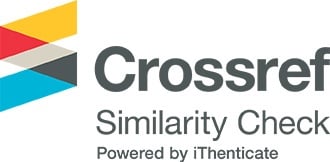Bắt nạt trực tuyến của sinh viên: Phân tích từ cách tiếp cận tâm lý học
Các tác giả
DOI: https://doi.org/10.59294/HIUJS.25.2023.506Từ khóa:
bắt nạt trực tuyến, bắt nạt truyền thống, sinh viênTóm tắt
Bài viết này phân tích hành vi, nguyên nhân, hậu quả, ứng phó của nạn nhân, đề xuất biện pháp và một số kiến nghị cho bắt nạt trực tuyến hiện nay của sinh viên. Phương pháp phỏng vấn sâu và điều tra bằng bảng hỏi được sử dụng trong nghiên cứu. Kết quả nghiên cứu chỉ ra hành vi bắt nạt trực tuyến qua ngôn từ là chủ yếu, kế đến là hành vi về mặt kĩ thuật. Đồng thời, nguyên nhân dẫn đến bắt nạt trực tuyến là nhận thức, mâu thuẫn trong mối quan hệ, tính cách, sự giáo dục của gia đình. Nạn nhân chịu hậu quả nặng nề về mặt cảm xúc, thể chất, hành vi tiêu cực. Sinh viên cũng đề xuất nhóm biện pháp từ trường đại học rất quan trọng trong ngăn chặn bắt nạt.
Abstract
The article analyzes the behavior, causes, consequences, responses of victims, proposes measures and some recommendations for the current cyberbullying of students. In-depth interview and questionnaire survey methods were used in the research. Research results show that cyberbullying through words is the main, followed by technical behavior. At the same time, the cause of online bullying is conflict in relationships, character, awareness, family education. Victims suffer severe emotional, physical, and behavioral consequences. Students also suggested a group of measures from the university that are very important in preventing cyberbullying.
Tài liệu tham khảo
[1] Feinberg, T., & Robey, N., “Cyberbullying”, The education digest, 74(7), 26, 2009.
DOI: https://doi.org/10.1016/B978-0-08-044894-7.00562-5[2] Ortega, R., Elipe, P., Mora-Merchán, J. A., Calmaestra, J., & Vega, E. The emotional impact on victims of traditional bullying and cyberbullying: A study of Spanish adolescents. Zeitschrift für Psychologie/Journal of Psychology, 217(4), 197-204, 2009.
DOI: https://doi.org/10.1027/0044-3409.217.4.197[3] Paul, S., Smith, P. K., & Blumberg, H. H., “Revisiting cyberbullying in schools using the quality circle approach”, School Psychology International, 33(5), 492-504, 2012.
DOI: https://doi.org/10.1177/0143034312445243[4] Slonje, R., Smith, P. K., & Frisen, A., “Processes of cyberbullying, and feelings of remorse by bullies: A pilot study”, European Journal of Developmental Psychology, 9, 244-259, 2012.
DOI: https://doi.org/10.1080/17405629.2011.643670[5] Tokunaga, R. S., “Following you home from school: A critical review and synthesis of research on cyberbullying victimisation”, Computers in Human Behavior, 26, 277-287, 2010. doi: 10.1016/j.chb.2009.11.014.
DOI: https://doi.org/10.1016/j.chb.2009.11.014[6] Whittaker, E., & Kowalski, R. M., “Cyberbullying via social media”, Journal of school violence, 14(1), 11-29, 2015.
DOI: https://doi.org/10.1080/15388220.2014.949377[7] Dương Thị Huỳnh Mai, “Bị bắt nạt trực tuyến và các yếu tố liên quan ở học sinh trung học cơ sở, trung học phổ thông tại Thành phố Hồ Chí Minh”, Tạp chí Y học, tập 25 số 2, 2021.
[8] Trần Văn Công, Bahr Weiss, David Cole, Xây dựng thang đo nạn nhân bắt nạt cho trẻ em Việt Nam. In: Trần Thị Lệ Thu. Kỷ yếu hội thảo khoa học toàn quốc về sức khỏe tâm thần trong trường học, tr.228-247. Nhà xuất bản Đại học Quốc gia TP. Hồ Chí Minh, 2021.
[9] Phạm Thị Thu Ba, Trần Quỳnh Anh, “Bắt nạt qua mạng ở học sinh trung học phổ thông và một số yếu tố liên quan”, Nghiên cứu Y học, 104(6), 35-42, 2015.
[10] Rigby, K., “Addressing bullying in schools: Theoretical perspectives and their implications”, School Psychology International, 25, 287–300, 2004. doi: 10.1177/0143034304046902.
DOI: https://doi.org/10.1177/0143034304046902[11] Smith, P. K., & Sharp, S., Tackling bullying in your school: Practical handbook for teachers. London: Routledge, 1994.
[12] Olweus, D., Sweden. In P. K. Smith, Y. Morita, J. Junger-Tas, D. Olweus, R. Catalano, & P. Slee (Eds.), The nature of school bullying: A cross-national perspective. London & New York: Routledge, 1999.
[13] Smith, P. K., Cyberbullying: The European perspective. In J. Mora-Merchan & T. Jäger (Eds.), Cyberbullying: A cross-national comparison (pp. 7-19). Verlag Empirische Padagogik: Landau, 2010.
[14] Samara, M., & Smith, P. K., “How schools tackle bullying, and the use of whole school policies: Changes over the last decade”, Educational Psychology, 28, 663-676, 2008. doi: 10.1080/01443410802191910.
DOI: https://doi.org/10.1080/01443410802191910[15] Hinduja S., “Patchin JW: Cyberbullying: neither an epidemic nor a rarity”, Eur J Devel Psychol, 9, 539-543, 2012.
DOI: https://doi.org/10.1080/17405629.2012.706448[16] Wachs, S., & Wolf, K. D., “Correlates between bullying and cyberbullying. First results of a self-report study”, Praxis der Kinderpsychologie und Kinderpsychiatrie, 60, 735-744, 2011.
DOI: https://doi.org/10.13109/prkk.2011.60.9.735[17] Tippett, N., & Kwak, K., Cyberbullying in South Korea. In Q. Li, D. Cross, & P. K. Smith (Eds.), Cyberbullying in the global playground: Research from international perspectives (pp. 202-219). Chichester, England: Wiley-Blackwell, 2012.
DOI: https://doi.org/10.1002/9781119954484.ch10[18] Ttofi, M. M., & Farrington, D. P., “Effectiveness of school-based programs to reduce bullying: A systematic and meta-analytic review”, Journal of Experimental Criminology, 7, 27-56, 2011.
DOI: https://doi.org/10.1007/s11292-010-9109-1[19] Paul, S., Smith, P. K., & Blumberg, H. H., “Addressing cyberbullying in school using the Quality Circle approach”, Australian Journal of Guidance and Counselling, 20, 157-157, 2010. doi: 10.1375/ajgc.20.2.157.
DOI: https://doi.org/10.1375/ajgc.20.2.157Tải xuống
Tải xuống: 1645











